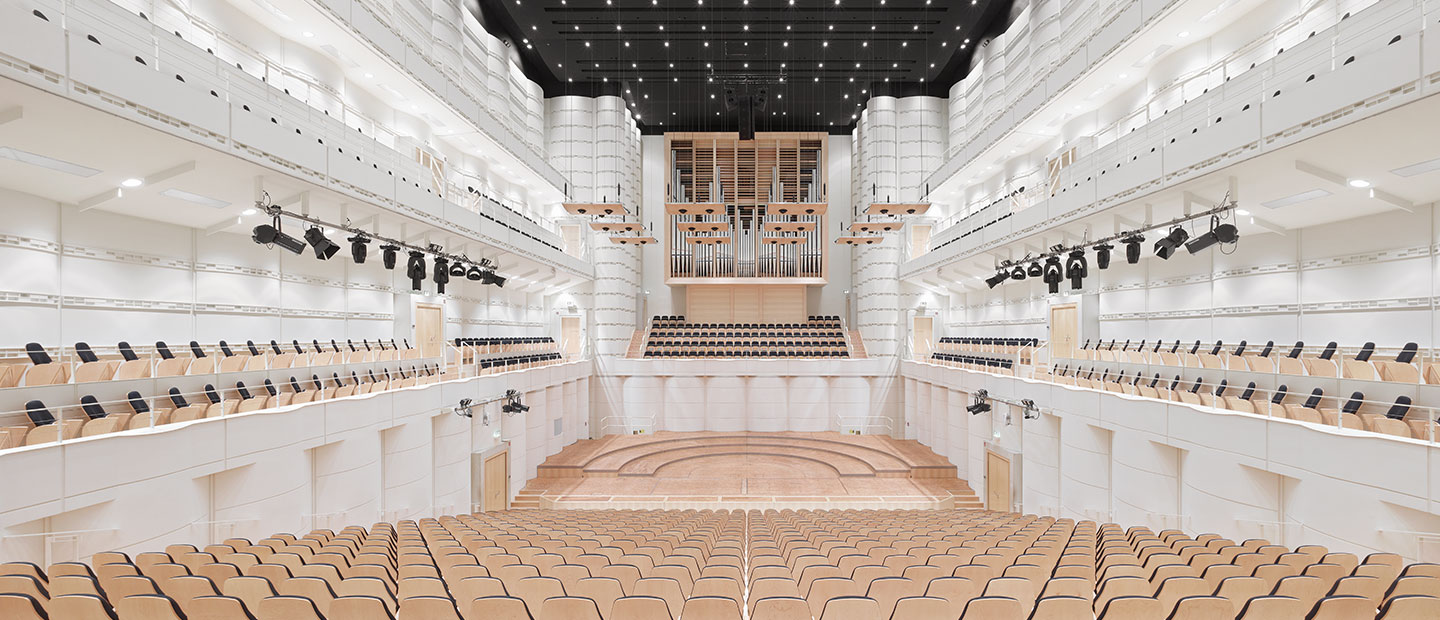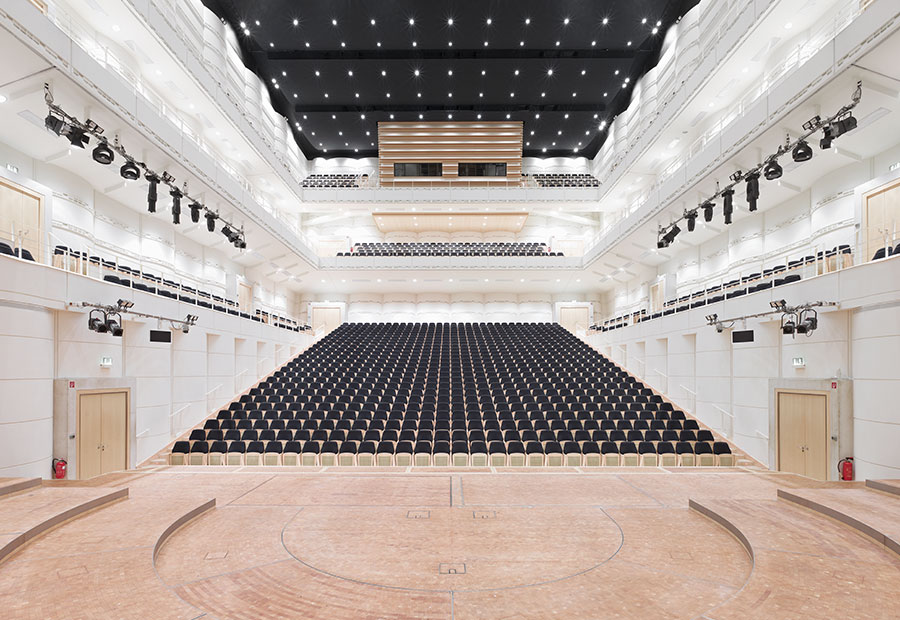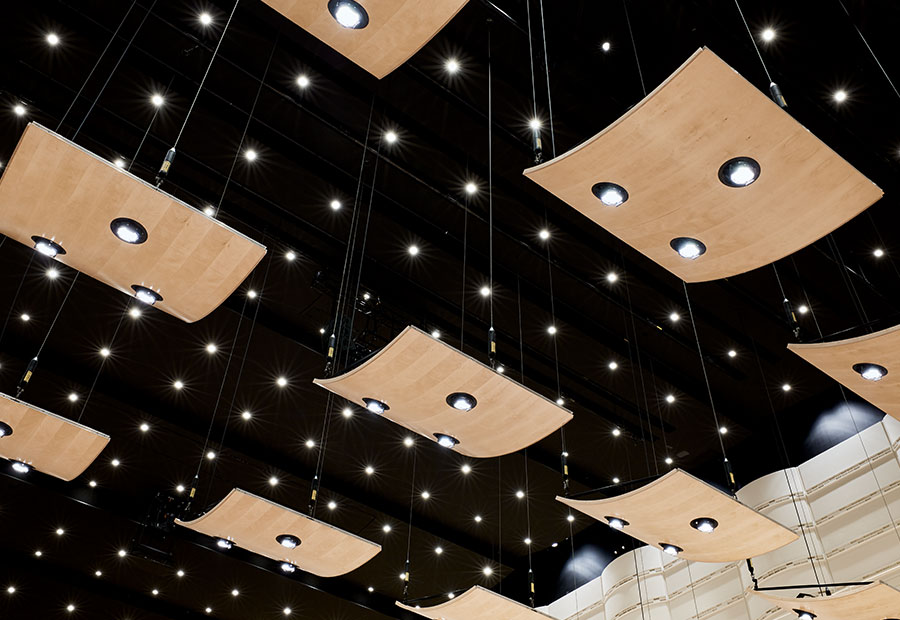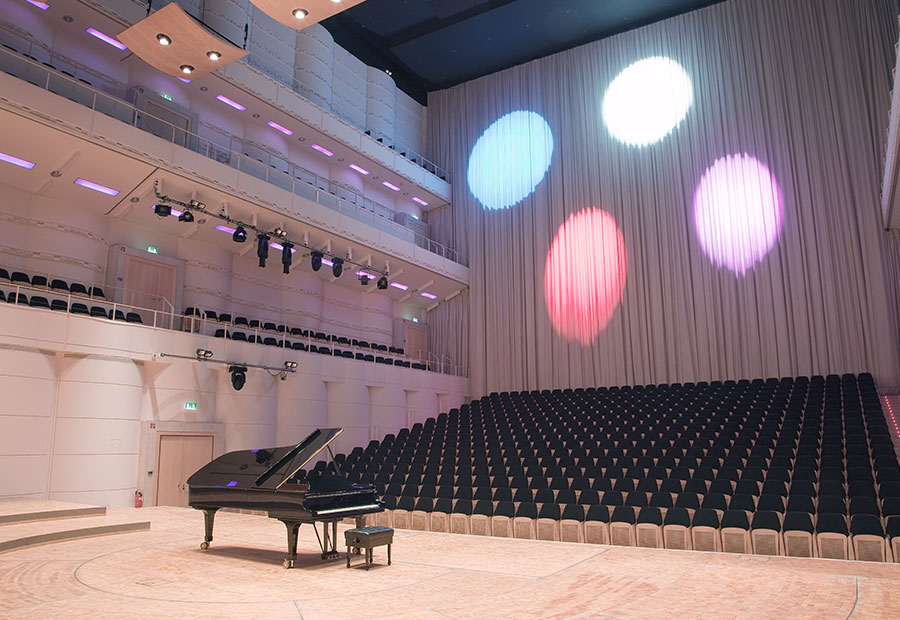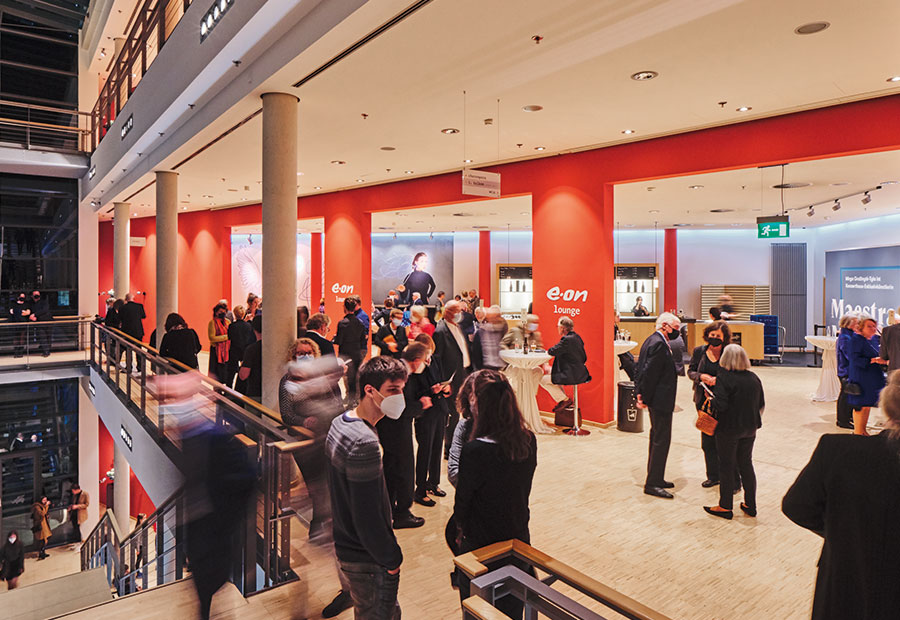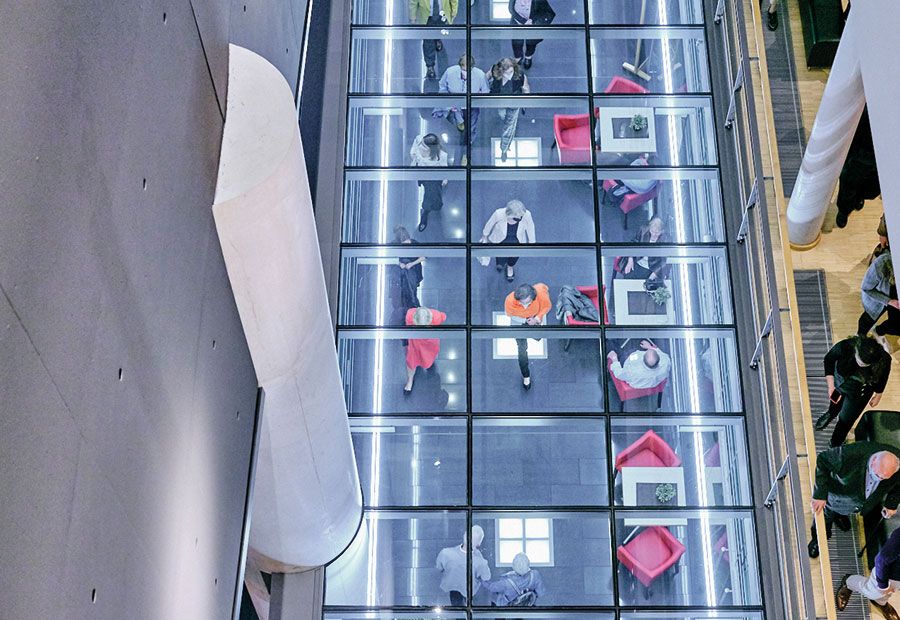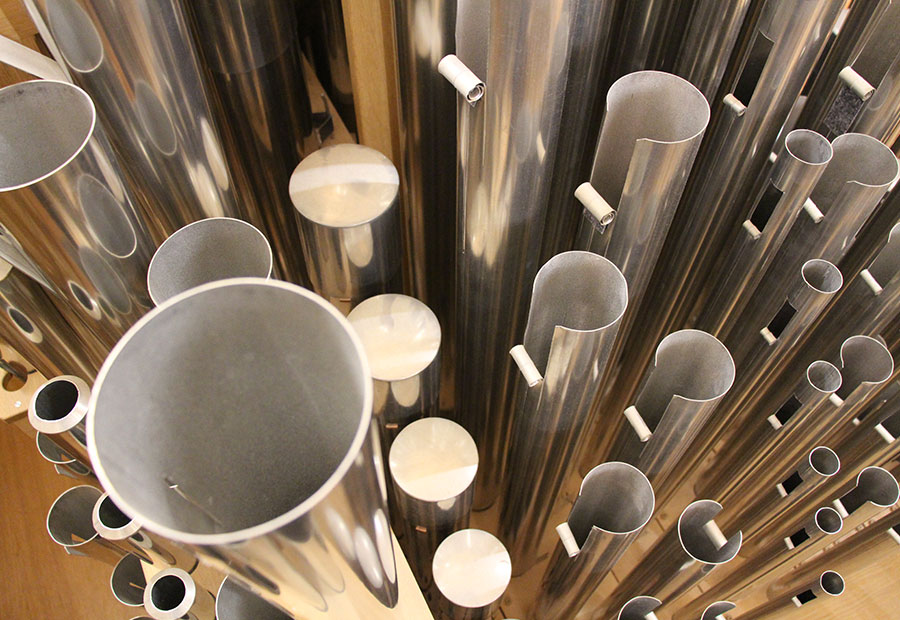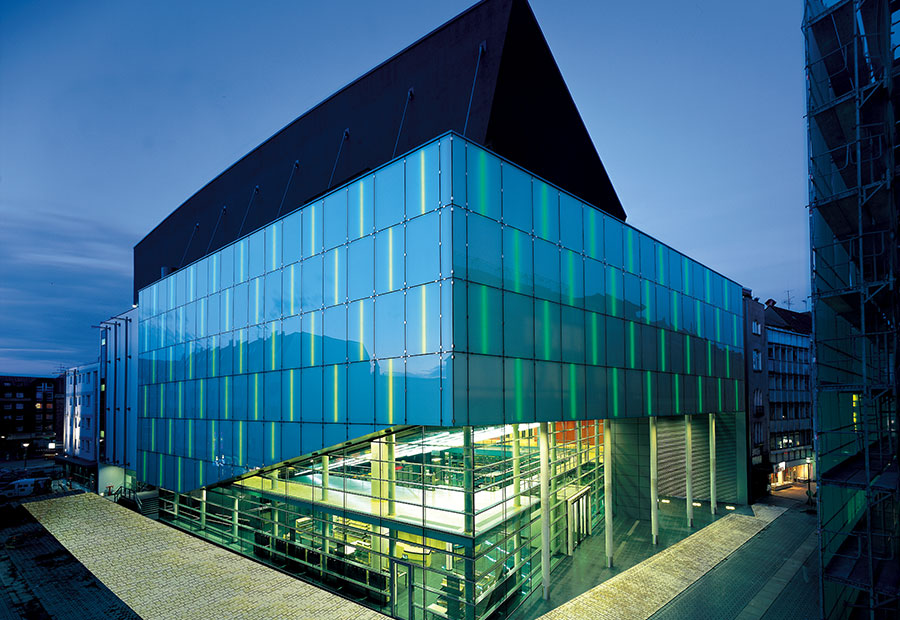
Konzerthaus Dortmund was designed by Dortmund-based architectural practice Schröder Schulte-Ladbeck. The concert hall, with its raw, dark outer skin floats into the airy and welcoming foyer like a mussel in water.
Mehr erfahren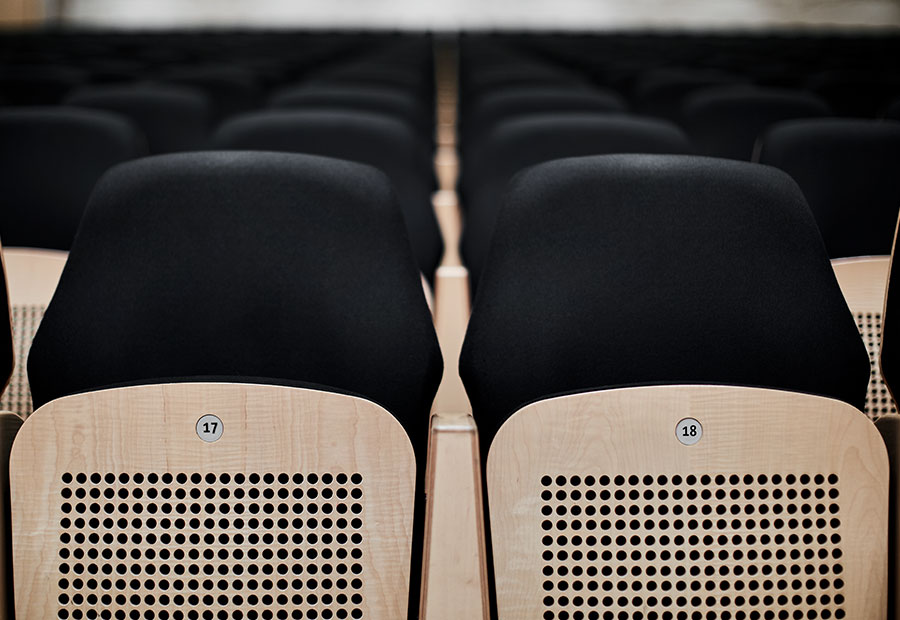
Almost every detail in the hall affects the acoustics. the seats of the chairs have been constructed with a carefully calculated perforated panel, which features a special foam on top. The walls of the hall are completely covered with acoustic elements. The rounded plaster elements, that are backed with wool, not only give the room a soft decorative form in a rhythmic wave but have a key role in optimally reflecting the sound waves so that there are no acoustic holes.
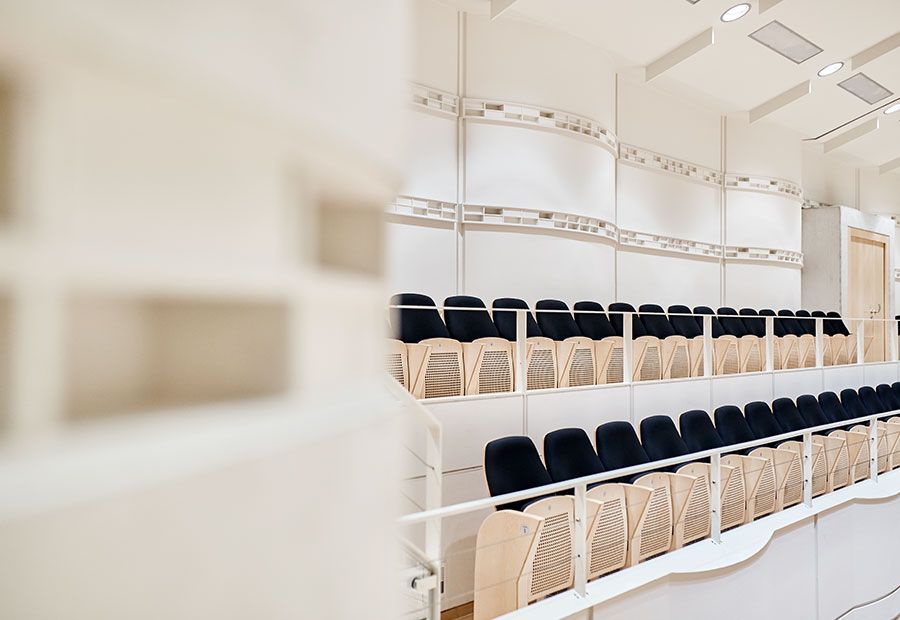
Ornamental bands are built into these wall elements with small boxes of different depths. The ornamental bands are also used to optimise the acoustics of the space. In the hall of the Vienna Musikverein, there are many small cherubs and wall decorations that reflect the sound in a special way. In Dortmund Konzerthaus, box-shaped recesses do this instead.
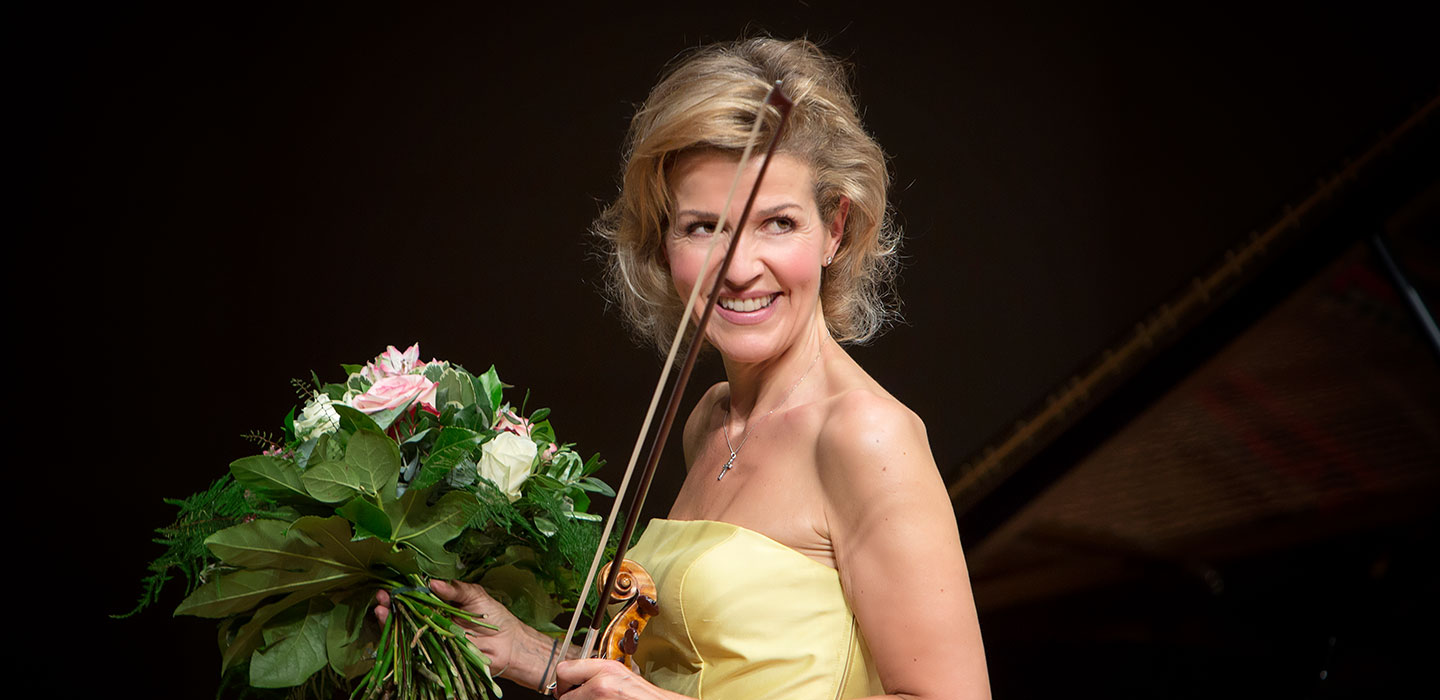
Artists love the hall and its excellent acoustics:
»In addition to the concert halls in Boston and Amsterdam, Konzerthaus Dortmund is acoustically one of the world’s top three halls... And it is beautiful too.«
Anne-Sophie Mutter
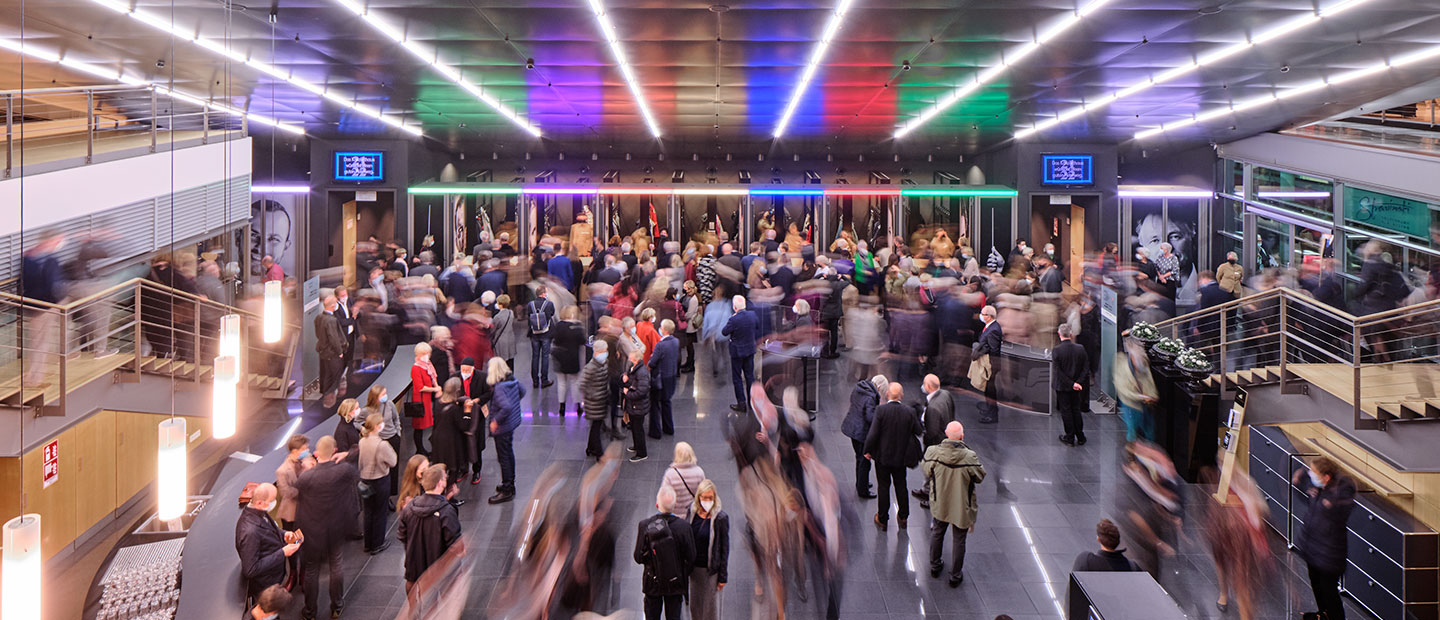
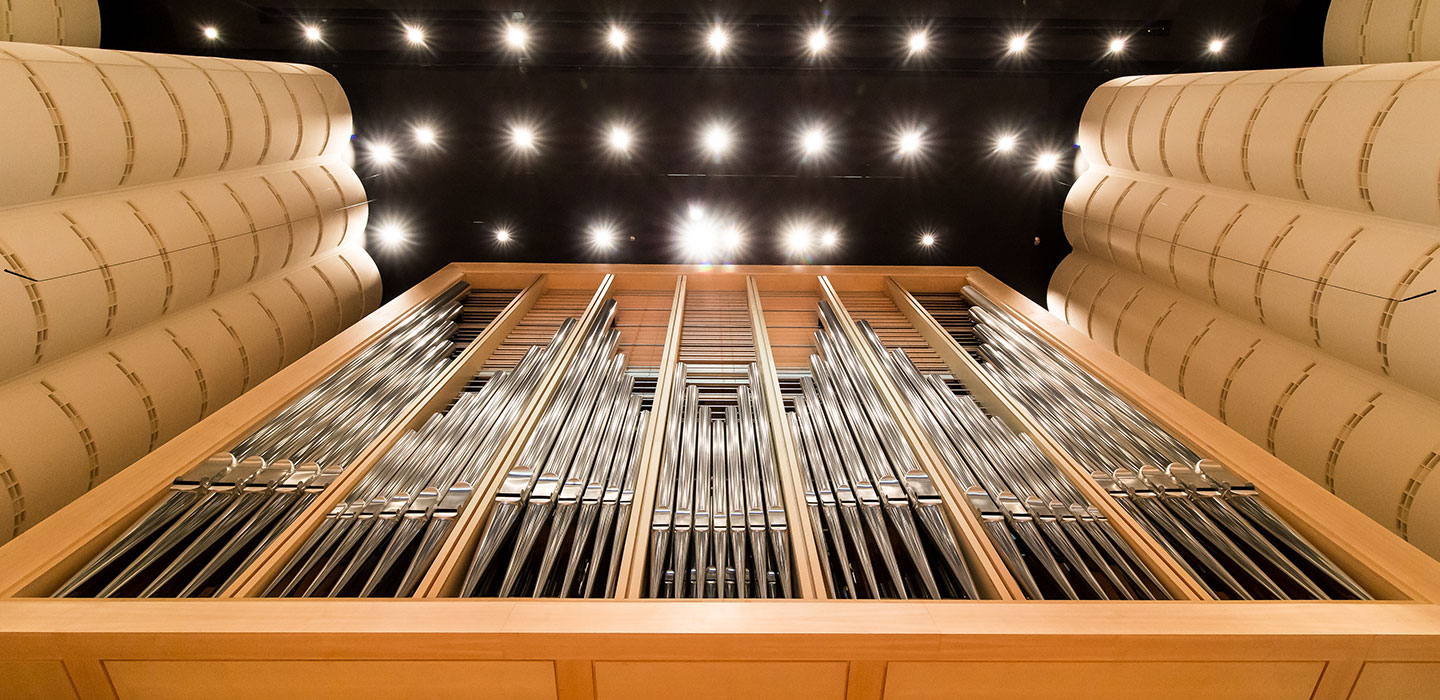
At the front of the concert hall, the large organ from the Bonn-based organ maker Klais is resplendent.
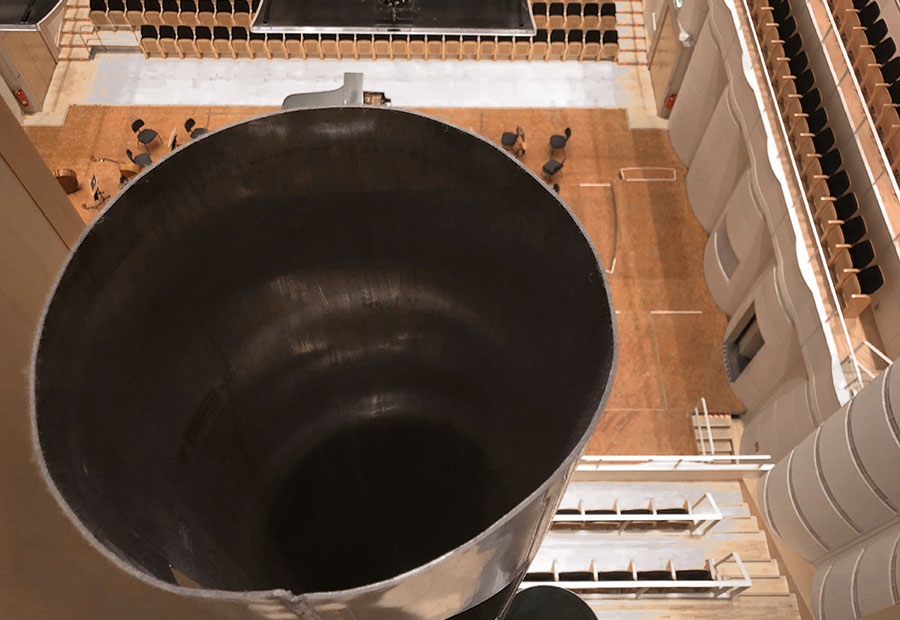
The sounding part of the smallest pipe measures just 8 millimetres. In contrast, the largest pipe is 8.13 metres long and weighs 400 kilograms. This is great news for the organ maker, because according to a tradition that has been handed down since the 16th century, the client, if they like the instrument, gives the organ maker as much wine as the largest pipe can hold. And in the case of the Konzerthaus organ, it was a volume of at least 600 litres that was officially handed over by the owner with the instrument on 28 September 2002.
